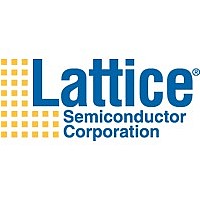LS-XP10-BASE-PC-N Lattice, LS-XP10-BASE-PC-N Datasheet - Page 12

LS-XP10-BASE-PC-N
Manufacturer Part Number
LS-XP10-BASE-PC-N
Description
MCU, MPU & DSP Development Tools ispLEVER Base Lattic eXP-10 Std Dev Kit
Manufacturer
Lattice
Datasheet
1.M4A5-6432-10JNC.pdf
(62 pages)
Specifications of LS-XP10-BASE-PC-N
Lead Free Status / RoHS Status
Lead free / RoHS Compliant
- Current page: 12 of 62
- Download datasheet (2Mb)
Note:
1. Polarity of CLK/LE can be programmed
Although the macrocell shows only one input to the register, the XOR gate in the logic allocator allows the
D-, T-type register to emulate J-K, and S-R behavior. In this case, the available product terms are divided
between J and K (or S and R). When configured as J-K, S-R, or T-type, the extra product term must be used
on the XOR gate input for flip-flop emulation. In any register type, the polarity of the inputs can be
programmed.
The clock input to the flip-flop can select any of the four PAL block clocks in synchronous mode, with the
additional choice of either polarity of an individual product term clock in the asynchronous mode.
The initialization circuit depends on the mode. In synchronous mode (Figure 7), asynchronous reset and
preset are provided, each driven by a product term common to the entire PAL block.
12
D-type Register
T-type Register
D-type Latch
Product Terms
Initialization
PAL-Block
Configuration
a. Power-up reset
Power-Up
Reset
Figure 7. Synchronous Mode Initialization Configurations
D/T/L
AP
Table 8. Register/Latch Operation
Input(s)
AR
Q
D=X
D=0
D=1
D=X
D=0
D=1
T=X
T=0
T=1
ispMACH 4A Family
17466G-012
Product Terms
Initialization
PAL-Block
0,1, ↓ (↑)
0, 1, ↓ (↑)
CLK/LE
↑ (↓)
↑ (↓)
↑ (↓)
↑ (↓)
1(0)
0(1)
0(1)
1
Power-Up
b. Power-up preset
Preset
D/L
AP
Q+
Q
Q
Q
Q
Q
0
1
0
1
17466G-013
AR
Q
Related parts for LS-XP10-BASE-PC-N
Image
Part Number
Description
Manufacturer
Datasheet
Request
R
Part Number:
Description:
IC PROGRAMMED LATTICE GAL 16V8
Manufacturer:
Lattice Semiconductor Corp.
Datasheet:
Part Number:
Description:
357-036-542-201 CARDEDGE 36POS DL .156 BLK LOPRO
Manufacturer:
Lattice Semiconductor Corp.
Datasheet:
Part Number:
Description:
357-036-542-201 CARDEDGE 36POS DL .156 BLK LOPRO
Manufacturer:
Lattice Semiconductor Corp.
Datasheet:
Part Number:
Description:
357-036-542-201 CARDEDGE 36POS DL .156 BLK LOPRO
Manufacturer:
Lattice Semiconductor Corp.
Datasheet:
Part Number:
Description:
357-036-542-201 CARDEDGE 36POS DL .156 BLK LOPRO
Manufacturer:
Lattice Semiconductor Corp.
Datasheet:
Part Number:
Description:
357-036-542-201 CARDEDGE 36POS DL .156 BLK LOPRO
Manufacturer:
Lattice Semiconductor Corp.
Datasheet:
Part Number:
Description:
357-036-542-201 CARDEDGE 36POS DL .156 BLK LOPRO
Manufacturer:
Lattice Semiconductor Corp.
Datasheet:
Part Number:
Description:
357-036-542-201 CARDEDGE 36POS DL .156 BLK LOPRO
Manufacturer:
Lattice Semiconductor Corp.
Datasheet:
Part Number:
Description:
357-036-542-201 CARDEDGE 36POS DL .156 BLK LOPRO
Manufacturer:
Lattice Semiconductor Corp.
Datasheet:
Part Number:
Description:
357-036-542-201 CARDEDGE 36POS DL .156 BLK LOPRO
Manufacturer:
Lattice Semiconductor Corp.
Datasheet:
Part Number:
Description:
357-036-542-201 CARDEDGE 36POS DL .156 BLK LOPRO
Manufacturer:
Lattice Semiconductor Corp.
Datasheet:
Part Number:
Description:
In-system programmable 3.3V generic digital switch
Manufacturer:
Lattice Semiconductor Corp.
Datasheet:
Part Number:
Description:
High performance E2CMOS PLD generic array logic, 15ns, quarter power
Manufacturer:
Lattice Semiconductor Corp.
Datasheet:
Part Number:
Description:
High performance E2CMOS PLD generic array logic, 15ns, low power
Manufacturer:
Lattice Semiconductor Corp.
Datasheet:
Part Number:
Description:
High performance E2CMOS PLD
Manufacturer:
Lattice Semiconductor Corp.
Datasheet:










